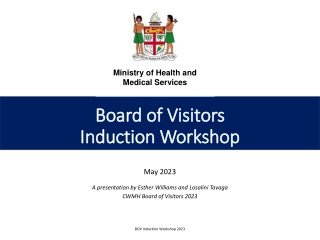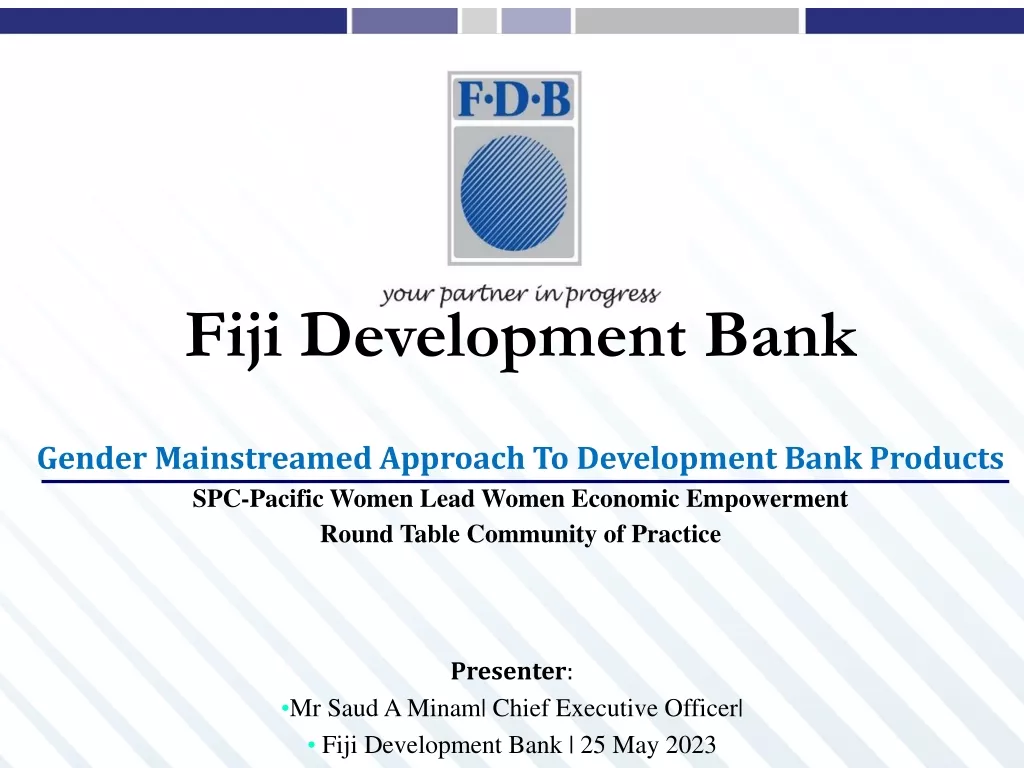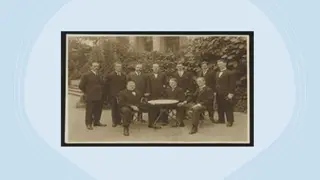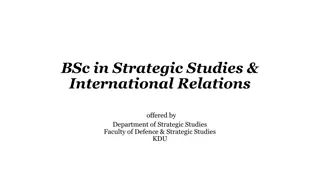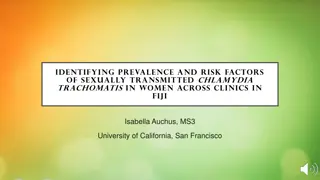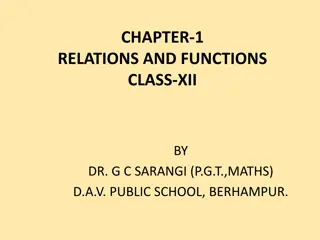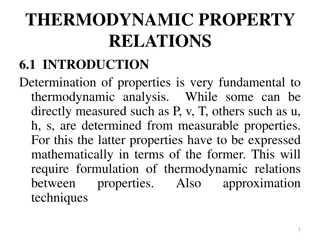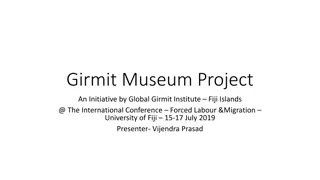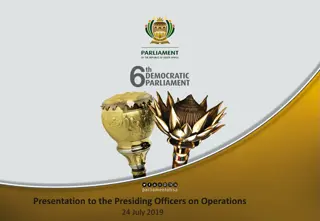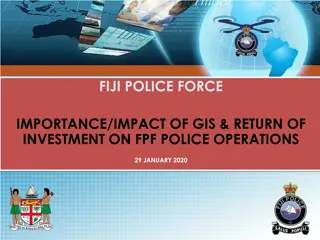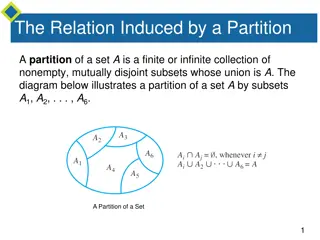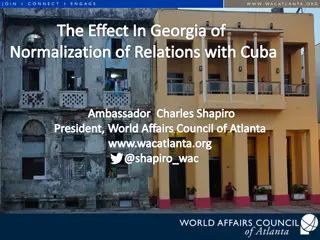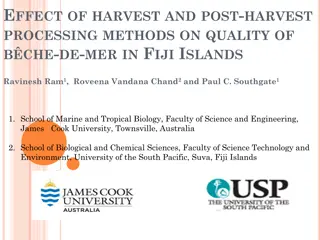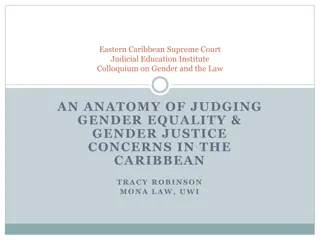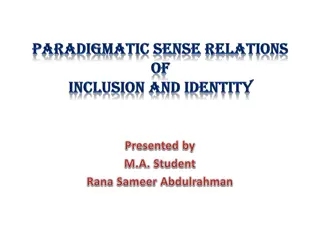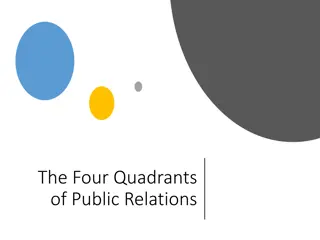Early Relations and Independence of Fiji
Ratu Mara's leadership during Fiji's journey to independence in 1970, the unresolved challenges post-independence, and the demographic shifts in Fijian population dynamics are explored. The tentative period of collaboration and democracy in the 1970s under Prime Minister Ratu Sir Kamisese Mara's administration is highlighted.
Download Presentation

Please find below an Image/Link to download the presentation.
The content on the website is provided AS IS for your information and personal use only. It may not be sold, licensed, or shared on other websites without obtaining consent from the author.If you encounter any issues during the download, it is possible that the publisher has removed the file from their server.
You are allowed to download the files provided on this website for personal or commercial use, subject to the condition that they are used lawfully. All files are the property of their respective owners.
The content on the website is provided AS IS for your information and personal use only. It may not be sold, licensed, or shared on other websites without obtaining consent from the author.
E N D
Presentation Transcript
Early relations: Ratu Mara and S.M. Koya The Union Jack was lowered for the last time at dusk on Friday, 9 October 1970. Fiji maintained close relations with Britain. Prime Minister Ratu Sir Kamisese Mara: "We became dependent in a warm spirit of friendliness and trust and we become independent in the same warm spirit . . . .Nothing that is happening today," he told a youthful Prince Charles, "can change the warm feelings of our people for the Crown, the United Kingdom and its people. Independence was celebrated with aplomb and splendor, with impressive and solemn Fijian ceremonies. Prince Charles, who personally handed the Instrument of Independence to Ratu Mara, formally terminating the Deed of Cession. there was a widespread feeling of relief.
Questions unresolved Fundamental questions about the structure and sharing of power, the thorny problems of land tenure, the structure of the electoral system, and the goals of development remained unresolved. Fiji had traveled the road to independence rather hurriedly and somewhat secretively. Public was not informed in advance and independence lack public support for the new order and most of the affairs were managed from top. The principal political failure of postcolonial Fiji during its first two decades was the unwillingness of its leaders to recognize the changed and changing realities of Fiji's society and politics. Fiji required bold and responsive leadership but the entrenched leaders believed to have fundamental right to govern and unwilling to share power with other except on their own terms.
Fijian population rise The number of ethnic Fijians increased from 202,176 in 1966 to 342,965 in 1988, and the IndoFijian population in the same period increased from 240,960 to 341,141. The pattern of IndoFijian decline will continue in the years to come, and it is not likely that the indigenous Fijians will everagain be surpassed or will allow themselves to be surpassed by another ethnic group. The political and social implications of that demographic dominance for Fiji's society, especially with the threat of IndoFijian dominance diminishing, will bear close watching. Population increase led to drift of people from rural to urban areas, especially Fijians. With this migration Fijian entered a modern multiracial living that was away from communal lives. But it brought urban problems of unemployment, low housing facilities, transition to the demand of wage earning and cash economy. People began to question the public life and political system constructed on the pillars of communalism and racial separations.
Tentative Honeymoon: 1970s This period saw a change of possibility of working of fair multiracial democracy. There was a close relationships established between Ratu Mara and Siddiq Koya, leader of opposition. Mara took Koya along to regional and international meetings to prove that genuine multiracial cooperation existed in Fiji. Mara also asked Koya to chair the Tenth South Pacific Conference in Suva, the first and only IndoFijian to have been given such prominence at this important gathering of regional Pacific Island leaders. Koya was an important member of the Fiji delegation to the Tongan independence celebrations. In this atmosphere of warm personal feelings and cooperation among its leaders, Fiji's first general election was held in 1972.
Alliance and NFP: 1972 Elections. At the London constitutional conference, it had been agreed to go into independence without an election to avoid disturbing the harmony of the preceding period. The Alliance, experienced, united, and led by a hugely popular Mara, presented itself to the voters as the only party fit to lead the country. It talked of peace and prosperity and responsible leadership. The NFP, reverting to its earlier populist rhetoric of the late 1960s, talked of social welfare, free and compulsory education, and balanced economic development. Although the outcome of an Alliance victory was a foregone conclusion it won 33 seats to the NFP's 19 the extent of racial polarization at the polls was startling. Most Fijians, 82.6 percent, voted for the Alliance Party, rallying to the call for ethnic solidarity and political unity under chiefly leadership. Predictably, the majority of the IndoFijians, 74.2 percent, voted for the NFP. The General Electors threw their support (79.2 percent of their communal votes) behind the ruling Alliance.
Alliance and NFP: 1972 Elections. Fewer Fijians voted for the NFP than did Indo-Fijians for the Alliance. The Alliance had a formidable lineup of IndoFijian politicians: Vijay Singh, Navin Maharaj, James Shankar Singh, M. T. Khan, and many others. Their presence in the Alliance camp testified to their faith in Ratu Mara as the best leader for the country and a true champion of multiracialism. Slowly, most of them would have left the party with varying degrees of bitterness at, as they saw it, being used and discarded by the party leadership. This trend of ethnic polarization at the polls, and of fragmentation of ethnic communal votes, would continue throughout the dominion years. It could not be otherwise given the communal structure of the political system.
Ratu Mara: Popularity In the early 1970s, Ratu Mara was at the peak of his career. second Fijian to be so honored since Ratu Sir Lala Sukuna. His traditional standing in his community was boosted in July 1969 when he was installed as Tui Nayau, the paramount chief of that island and, for all practical purposes, of the entire Lau region. His moderate stance on many contentious issues enhanced his multiracial image. It was almost an article of faith that Mara was indispensable for a peaceful and multiracial Fiji. At home, Mara enjoyed genuine bipartisan support for his leadership and his policies. On the international scene, he walked tall, both physically and metaphorically as a leader committed to multiracialism and parliamentary democracy.
Difference between Mara and Koya. What went sour in the latter half of the decade? Both leaders, Koya and Mara, faced internal challenges and charges of a "sellout of the interests of their respective communities. Instead of confronting and transcending these, both leaders fell afoul of each other and ended up petulantly retreating to their respective ethnic enclaves. Instead of leading, they both allowed themselves to be led by the ethnic and chauvinistic concerns of their communities, becoming trapped in and consumed by the communal play they had themselves devised.
Siddiq Koya: Rise and Fall Siddiq Koya was a Ba born, Tasmanian trained, Muslim lawyer who had been A. D. Patel's able lieutenant in the early 1960s. he had become a kind of folk hero to many cane farmers. Koya was an emotional, ebullient, chest thumping orator, full of fire and passion, a perfect deputy to the cool, analytical Patel. Koya's misfortune was that he had come of political age in Patel's large shadow in the eyes of many of the party's strongest supporters, he could not carve a distinctive niche for himself. Koya's own political miscalculations cost him dearly. His surprisingly close friendship with Mara in the early 1970s did not pay dividends, for in the end he had little to show for his cooperation.
Siddiq Koya: Rise and Fall and Mara changing prospective During 1960s, the Koya faced challenges within the party. There emerged a deep rifts in the top ranks of party hierarchy in NFP. Koya being an unchallenged leader of the party and the problems emerged. Mara fared better within his party. His status as the paramount chief of a powerful area of Fiji gave him a great advantage in his own community, where genealogy, status, and protocol counted for a great deal. His keen understanding of the political mantras of local politics, national and international prestige, and a conspicuous lack of any other credible alternative, both within his party and on the national scene, all helped to bolster his position. Some even criticized Mara of being having a heart of Indo-Fijian in Fijian clothes as he was advancing their interests at the expense of taukei. This criticism angered him deeply, hardening his political attitude and pushing him into a seemingly uncompromising ethnic corner. These were unhappy developments for Fiji.
Street Commission and constitution Because the method of election to parliament agreed to by both the political parties in London was an interim solution that provided only for the first House of Representatives elected after independence, both Mara and Koya, in their joint statement of 30 April 1970, had agreed to appoint a Royal Commission to recommend the most appropriate method for subsequent elections. A Royal Commission was appointed in 1975, with Professor Harry Street as the chairman and Sir William Hart and Professor Sir Keith Lucas as members. The commission convened in Fiji and held several hearings throughout the country. Fiji Times expressed it, the Royal Commission was "an exercise in futility because, no matter what its recommendations, none of the parliamentary parties has the necessary numbers to create a constitutional change."
Recommendations In its report, the commission recommended a compromise solution to Fiji's thorny electoral system. It agreed that communal representation should be maintained with the same weight as in the 1970 constitution to guarantee ethnic representation of the major communities of Fiji so that no ethnic group felt deprived of electoral representation. But it also recommended that the remaining twenty five seats be turned into common electoral roll in five constituencies "with no restriction of race or religion for either voters or candidates." These seats, it suggested, should be elected on the basis of a single transfer vote.
Recommendation outcomes These sensible recommendations took into account the unique ethnic composition of Fiji's society (with all the ethnic communities' attendant fears and prejudices) and the need, on the other hand, to transcend these barriers to create an overarching sense of nationhood. However, the recommendations fell on infertile, even hostile, political ground. The 1970 constitution had served the Alliance well. Its electoral provisions had worked to its advantage and so, promises notwithstanding, the party saw no pressing need for change. In their public presentations, the Alliance leaders advanced a number of reasons: extreme communalism would be generated if any of the major groups sensed erosion of their representation in parliament there was a need to consolidate the status quo after dramatic constitutional developments of the previous decade more time was needed to see how the 1970 arrangement might work.
Election method? The constitution could not be changed at the whim of any political party because all amendments to the constitution required the support of three quarters of the members of both houses of parliament, with the Great Council of Chiefs having the power of veto over any legislation that even remotely touched on Fijian interests and sensibilities. Moreover, the Royal Commission was not proposing to tinker with the integrity of the constitution as a whole, but with only one part of it the method of election that had deliberately been left unresolved at the constitutional negotiations. Ahmed Ali, then an Alliance Party functionary, was candid. ''For Fijians the meaning is clear," he said. "The Fijian people and their leaders are not likely to tolerate a political system which might pave the way for political control of Fijians by non Fijians. In short, the Alliance's mind was made up. If the commission endorsed its position, the recommendations would be welcomed if it did not, they would be shelved, which is what finally happened. Mara stood against common roll that was a different position in comparison to his stand of 1960s.
NFP Vs Alliance The NFP had been cleverly outmaneuvered. It tried to remind the Alliance of the "gentleman's agreement" on the implementation of the recommendations of the Royal Commission. It had taken that agreement at face value, believing that the Alliance would honor its commitment. The Alliance, on the other hand, had made the promise as an expedient tactical move to extract concessions on important issues never really intending to abide by its words. Koya expressed surprise at the Alliance's intransigence. Party Secretary Ramrakha accused the Alliance of "deceit" and worse, but these were merely words floating in the wind.
NFP internal problems Being outmaneuvered by the Alliance was one part of the problem. The other was that the rest of the NFP leadership, for all its fulminations, was not as intellectually or politically committed to the concept of a common roll as A. D. Patel had been. Instead of confronting the Alliance, or making the Royal Commission recommendations a national political issue, the NFP leaders, in the throes of bitter internal conflicts. Koya defended not pushing the issue at the negotiating table because, he said, IndoFijians had waited for a common roll since 1929, and they could wait for some time longer.
Koya lacks commitment: Old system retained While Koya may have had a nominal commitment to the idea, some in his party accepted the Alliance view about the need for guaranteed and equal representation in the parliament for all ethnic groups. In the interests of the IndoFijian community itself, they suggested, the old system should be maintained. The IndoFijian birthrate had been declining emigration was slowly reducing the total IndoFijian population, and it was a distinct possibility that in the next decade or so, the IndoFijian population could become a minority in Fiji. When that happened, the thinking went, the existing formulas would serve the needs of the community best. This argument went against the basic philosophy of a common roll as it had been advocated in earlier decades. It was harmful to the larger interests of the IndoFijian community, which rested in political integration rather than ethnic separateness, in joining hands across ethnic boundaries rather than remaining locked in ethnic compartments. The IndoFijian leaders had succumbed to the political considerations of the moment, with only myopic visions of the longterm interests of their own people and the nation at large.
Conclusion With the shelving of the Street Commission recommendations, the last opportunity was lost for devising an electoral system that went beyond the politics and ideology of communalism to create a more politically integrated nation. More immediately, the Alliance's refusal to consider the recommendations placed a deeper and steadily growing wedge between the two leaders, Koya and Mara, and the two parties. The concept of multiracialism "has now become just words, or perhaps words written on paper.


